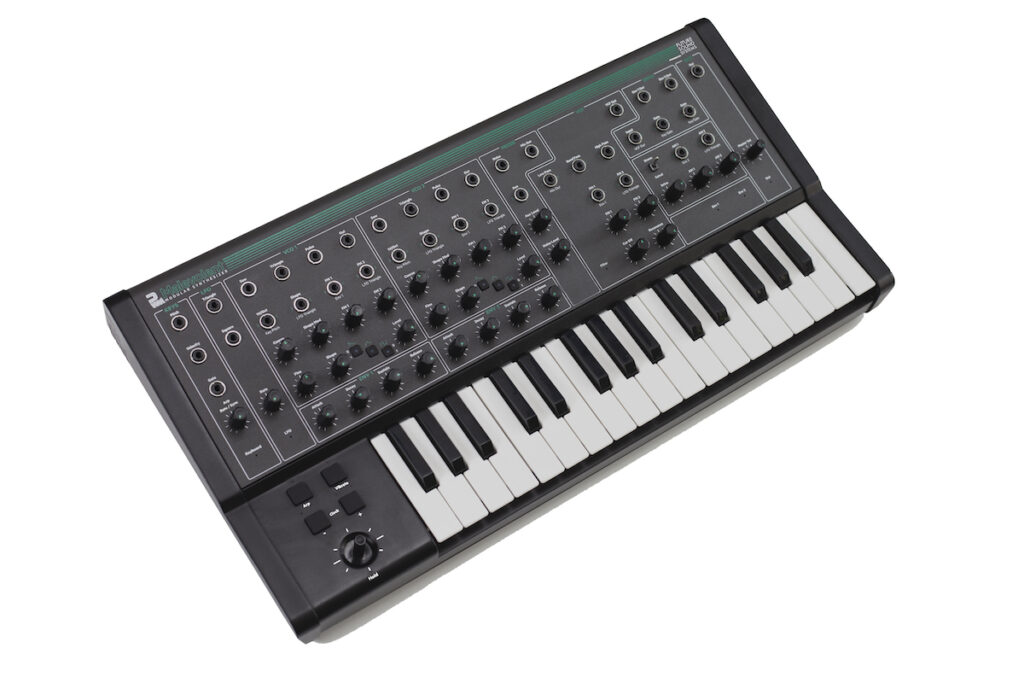A debut release from a new UK synth brand, the Malevolent is designed to be nasty. Greg Scarth puts it to the test.

Character is important. Just about any truly classic synth you can name has a distinctive sound which defines its personality: the fat warmth of a Minimoog, the acid squelch of a TB-303, the crystalline clarity of a DX7, and so on. The PWM Malevolent is the debut synth release from a new UK brand, and it’s one which arrives at a tricky time. It’s no secret that established brands have struggled with supply chain issues, chip shortages and other infrastructure issues over the last couple of years, so you have to applaud PWM for taking on the challenge. The big question is whether the all-analogue, semi-modular Malevolent has the personality to back up its specifications.
To cut to the chase, the way PWM have designed character into the Malevolent is spelled out from the word go by the synth’s name, defined in the marketing blurb as “having or showing a wish to do evil to others”. Evil might be pushing it, but the character of this relatively simple monophonic synth is designed to be gritty and edgy. The brand’s demo video reinforces the concept, featuring such example patches as ‘Pretty Beef’ (“low-end meat”), ‘Red Whine’ and ‘Devil’s Cry’. It’s a synth with a personality unlike anything else around, lending itself perfectly to darker techno styles, cold ambient and more experimental genres. We’ll come back to the sound, but before we get ahead of ourselves, let’s take a look at the basics.

The Malevolent follows what’s now a fairly well-worn formula: a compact, monophonic analogue synth with mini keys, built-in USB MIDI, Eurorack-compatible patch points, and so on. If the formula sounds familiar from other synths like, say, the Korg MS-20 Mini or Arturia MiniBrute 2, it’s worth reminding yourself that PWM is a much, much younger brand than Korg or even Arturia. With that context in mind, it’s impressive how the Malevolent doesn’t feel like a half-baked first attempt from a new brand; in terms of build quality, basic features and specs, the Malevolent feels like the finished article. A nod to the designers is in order for the look of the synth, too: the malevolent looks distinctive without reinventing the wheel, featuring a certain brutalist charm and minimalist graphics in a fetching shade of green.

There are few surprises to the synth architecture, but the way it’s designed is all logical and functional. You’ve got two identical VCO sections offering pulse, triangle and sawtooth waves plus a nice selection of modulation options. Two identical ADSR envelope generators are used for modulation. There’s a single LFO, an arpeggiator, a mixer section with noise and external input, plus a resonant multi-mode (low-pass/band-pass/high-pass) filter based around the classic 1950s Sallen-Key topology (vaguely similar to what you’d find in Korg MS-20s or Arturia Brutes – in other words, a nasty, screaming filter sound at higher resonance settings).
The signal patch and modulation routing is internally normalled, so you don’t need to get the patch cables out to create sounds, although that’s where the deeper options reveal themselves once you start to explore them. The Malevolent is easy to use but offers up plenty of personality from the word go; the character is baked into the circuits rather than relying on anything unusual or gimmicky. With the exception of adjustable wave shapes in the VCO sections and the Drive control in the amp section, all the controls are very standard stuff that you’d find on basically any synth, and yet the results are far from bog standard. Look to the patch points and you soon see how much they add to your options, with nice touches like simultaneous outputs for all the oscillator wave shapes and a whopping six FM inputs (two for each oscillator and two for the filter).

All in all, the Malevolent is a deceptively interesting instrument. On the surface, you might write it off as being just another cookie-cutter semi-modular synth; in terms of features, there isn’t much which obviously sets it apart from a number of other analogue offerings on the market, but that doesn’t tell you the full story. Once you get your hands on it, you realise that it’s an instrument which stands apart, and the potential to expand it even further by hooking up a few choice Eurorack modules makes it even more appealing.
With the Malevolent, PWM have crafted an impressive debut synth. It’s well thought-out, well made and offers plenty of sonic versatility, but above all else it’s got character. Rather than playing it safe with a jack-of-all-trades synth that borrows from the likes of Roland or Moog, PWM have created something a bit different, and that’s to be applauded. At just under £425, it’s keenly priced against the alternatives. The closest rival is probably the (substantially more expensive) Korg MS-20 Mini, but there’s enough about the Malevolent to set it apart. It makes a worthwhile contender in this increasingly crowded market.
Greg Scarth
More info/buy